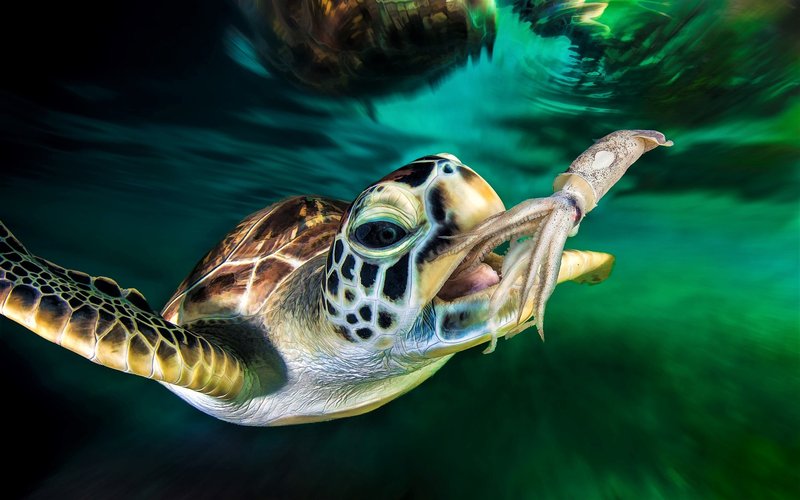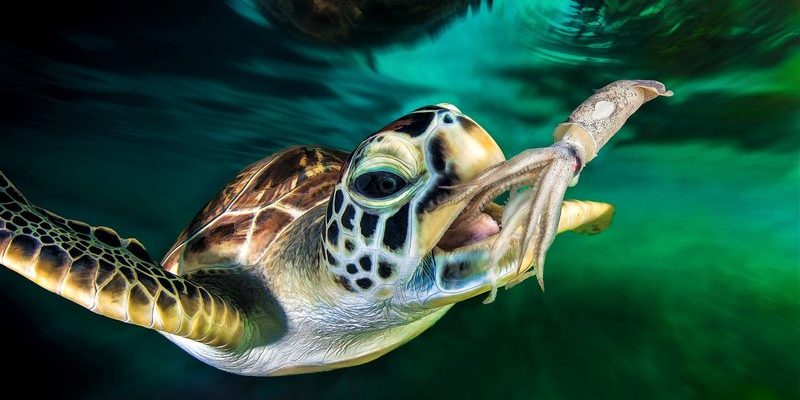
These turtles are like the gourmet eaters of the sea, favoring a diet that reflects their exquisite taste—specifically, they love eating sponges! This preference is not just about flavor; it’s part of their role in the marine ecosystem, helping to maintain the balance. So, if you’re curious about what makes the hawksbill turtle tick when it comes to diet, let’s dive into their feeding habits and maybe discover some interesting facts along the way.
Understanding the Hawksbill Turtle’s Diet
The hawksbill turtle, known scientifically as *Eretmochelys imbricata*, primarily feeds on marine invertebrates. Their sharp, pointed beaks are perfectly designed for prying sponges and other food items from reefs. Think of their beak as a handy toolbox, allowing them to access food that many other sea animals can’t reach.
Sponges are their favorite snack, but they’re not exclusive eaters. Hawksbills also dine on a variety of other foods, including:
- Sea anemones
- Jellyfish
- Coral polyps
- Sea cucumbers
By eating these creatures, hawksbills help regulate sponge populations, ensuring that coral reefs stay healthy and vibrant. This ecological role is vital because, without balance, certain species can overwhelm the reef, leading to a decline in biodiversity.
Feeding Techniques of Hawksbill Turtles
Hawksbill turtles are skilled foragers, using their beaks to scrape food off rocky surfaces and coral. When they approach a patch of sponges or other delicacies, it’s like they’ve found a buffet! With a gentle but determined motion, they can pull apart the tough texture of sponges to get to the softer inner flesh.
Interestingly, these turtles have a unique way of consuming their food. They often take small bites, allowing them to savor each morsel. Picture yourself at a fancy restaurant, where each bite is an experience; that’s how a hawksbill turtle treats its meals. This method not only helps them enjoy their food but also allows them to digest it properly.
Have you ever seen a hawksbill turtle in action? When they feed, they often make a little mess, ripping off bits of sponge and other materials, which can sometimes look like they’re having a bit too much fun. But this feeding strategy is essential as it creates habitats for other marine creatures, demonstrating that their dining habits have broader environmental impacts.
The Role of Hawksbill Turtles in Ecosystems
Hawksbill turtles serve as important contributors to marine ecosystems. By maintaining sponge populations, they inadvertently support coral reefs, which are home to many marine species. When sponges are overabundant, they can smother corals, choking off their ability to thrive. The hawksbill’s eating habits help prevent this, making them crucial for the health of the reef.
Moreover, their diet also helps improve water quality. As they nibble on sponges and other invertebrates, they help to filter out sediment and organic matter in the water, contributing to a cleaner environment. Picture them as ocean cleaners, doing their part to keep the waters clear and healthy for everyone.
It’s fascinating to think that something as simple as a turtle’s diet can impact a whole ecosystem. By understanding their role, we can appreciate even more how interconnected life in the ocean really is.
Threats to Hawksbill Turtle Diet
Despite their importance, hawksbill turtles face several threats that impact their feeding habits. One major concern is the decline of coral reefs due to climate change, pollution, and overfishing. As reef habitats degrade, the availability of their favorite foods diminishes, making it harder for these turtles to find enough to eat.
Additionally, illegal fishing practices can disrupt their feeding grounds. When fishermen use destructive techniques, it not only harms the fish population but also the delicate balance of the ecosystem that hawksbill turtles rely on. Imagine going to your favorite restaurant only to find it closed; that’s how these turtles might feel when their feeding areas are damaged.
Conservation efforts are crucial to protect both the hawksbill turtles and their food sources. By taking steps to preserve coral reefs and regulate fishing practices, we can help ensure that these turtles continue to thrive for generations to come.
In summary, the diet and feeding habits of the hawksbill turtle highlight their crucial role in maintaining healthy marine ecosystems. From their gourmet preferences for sponges to their impact on coral reefs, these turtles are more than just beautiful creatures swimming in the ocean. They are essential players in a complex ecological dance.
As we learn about their feeding habits, it becomes clear that protecting hawksbill turtles is vital for our oceans. You might not be diving into the water to see them firsthand, but supporting conservation efforts can make a difference. Every little action counts, from reducing plastic waste to conserving coral reefs. Let’s make sure that future generations can marvel at the fascinating diets of hawksbill turtles and the vibrant marine life they help sustain.

